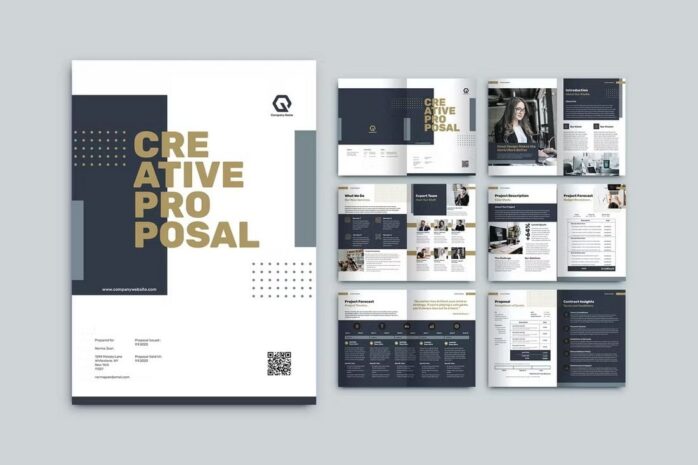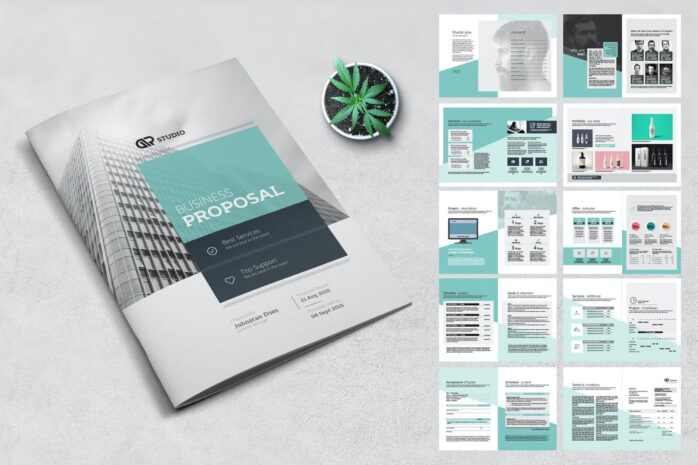In the ever-evolving landscape of marketing, creating an effective proposal can be the linchpin to securing new clients and projects. A marketing proposal outlines strategies and solutions for potential clients, demonstrating how your services can solve their problems and enhance their brand. This blog post will dissect the components of successful proposals and highlight common pitfalls to avoid. We will navigate through real-life examples, providing actionable insights and best practices to elevate your marketing proposals.
Understanding the Structure of a Marketing Proposal

Before diving into what makes a marketing proposal successful, it’s essential to understand its structure. A well-organized proposal serves as a roadmap, guiding the client through your thought process and proposed strategies.
The introduction should be concise and impactful. It’s your first opportunity to grab the client’s attention and demonstrate your understanding of their needs and challenges. A compelling introduction sets the stage for the rest of the proposal, establishing a tone of professionalism and expertise.
A situational analysis provides a snapshot of the client’s current marketing landscape. This includes an assessment of their market position, target audience, and competitors. By presenting a well-researched situational analysis, you demonstrate your dedication to understanding the client’s unique challenges and opportunities.
Crafting Compelling Content

The content of your marketing proposal sample is where you can showcase your creativity, expertise, and unique value proposition. It’s essential to tailor your content to meet the client’s specific needs and objectives.
This section is the heart of your marketing proposal. Here, you outline the strategic approach and specific tactics you plan to employ to achieve the client’s objectives. Whether it’s through social media marketing, content creation, SEO, or paid advertising, each tactic should align with the overall strategy and contribute to the set objectives.
A detailed budget and timeline are critical components of any proposal. Clients want to know how much your services will cost and how long it will take to see results. Be transparent and realistic in this section, breaking down costs and providing a clear timeline for each phase of the project.
Common Pitfalls to Avoid

Even the most well-intentioned marketing proposals can fall short if they succumb to common pitfalls. Recognizing these mistakes can help you refine your proposals and increase your success rate.
Lack of Customization
One of the most significant mistakes is the lack of customization. Generic proposals that fail to address the specific needs and challenges of the client are unlikely to make an impact. Tailor each proposal to the client, demonstrating your understanding of their industry, business, and unique circumstances.
Avoid using jargon or technical terms that the client may not understand. Instead, write in clear, accessible language that conveys your ideas effectively. Remember, the goal is to establish a connection with the client, not to overwhelm them with industry lingo.
Overpromising and Underdelivering
To impress, some marketers make the mistake of overpromising results in their proposals. Setting unrealistic expectations can lead to client dissatisfaction and damage your reputation in the long run. Be honest about what you can achieve and avoid making guarantees about specific outcomes.
Instead, focus on past successes and how your expertise can be applied to the client’s project. Provide case studies or testimonials to support your claims and build trust with the client.
Neglecting the Follow-Up

The work doesn’t end once you’ve submitted your proposal. A common pitfall is failing to follow up with the client. This can be perceived as a lack of interest or professionalism. Set a reminder to follow up within a week of submitting your proposal, offering to answer any questions or provide additional information.
A thoughtful follow-up can keep the conversation going and show the client that you are genuinely interested in helping them achieve their marketing goals. It also provides an opportunity to address any concerns or objections they may have.
Evaluating Client Needs and Expectations
It’s crucial to have a deep understanding of your client’s needs and expectations. This initial step sets the groundwork for a proposal that not only resonates with the client but also addresses their specific challenges and goals.
Understanding client needs involves thorough research and effective communication. Begin by reviewing any available data on the client’s past marketing efforts, industry trends, and direct competitors. Conducting interviews or surveys with the client can also provide valuable insights into their priorities and expectations. By aligning your proposal with the client’s vision and objectives, you demonstrate a partnership approach rather than a transactional relationship.
Addressing client expectations in your suggestion requires a balance between ambition and realism. Clearly outline how your services can meet or exceed their goals without overcommitting. This builds trust and establishes a realistic framework for the project, ensuring that both parties are on the same page from the outset.
Integrating Data and Analytics

In today’s data-driven marketing environment, incorporating data and analytics into your proposal can significantly enhance its effectiveness. This approach not only demonstrates your analytical capabilities but also provides a solid foundation for your recommended strategies and tactics.
Start by including relevant market research, consumer behavior data, and competitive analysis to justify your approach. This shows the client that your recommendations are not just based on intuition but are backed by solid evidence. Be sure to present data in a clear and digestible format, using graphs, charts, and bullet points to convey key information at a glance.
Furthermore, outline how you plan to measure the success of the marketing initiatives. Specify the key performance indicators (KPIs) you will track and the tools and methods you will use for monitoring and analysis. This reassures the client that you are committed to achieving measurable results and provides a clear metric for success.
Conclusion
Crafting a winning marketing proposal requires a blend of creativity, precision, and understanding of the client’s needs. By structuring your submission effectively, customizing your content, and avoiding common pitfalls, you can increase your chances of success. Remember to keep your client at the center of your proposal, demonstrating how your services can solve their problems and contribute to their success. With these insights and best practices, you’re well on your way to creating marketing proposals that not only stand out but also get results.




